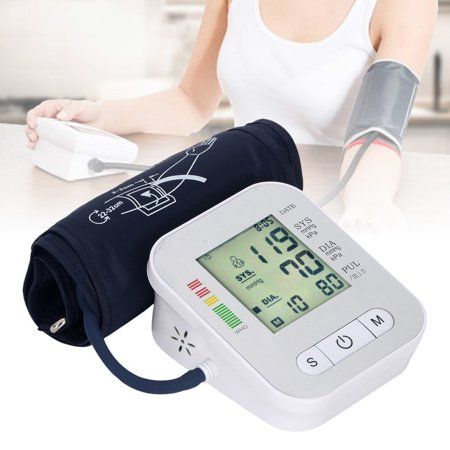Keeping tabs on your blood pressure at home is one of the smartest things you can do for your heart health. But did you know that many people unknowingly get inaccurate readings simply because of small mistakes?
Using a Blood Pressure Monitor is easy, but using it correctly makes all the difference.
Let’s look at the top 5 mistakes people make—and how you can avoid them to protect your health.
Why Home Blood Pressure Monitoring Matters
High blood pressure (hypertension) is often called the “silent killer” because it shows no obvious symptoms but greatly increases your risk of:
-
Heart attacks
-
Strokes
-
Kidney damage
-
Vision problems
Monitoring at home helps:
-
Catch issues early
-
Track how well medications or lifestyle changes are working
-
Provide valuable information to your doctor
But it only works if the readings are accurate!
Mistake 1: Measuring at the Wrong Time
Your blood pressure naturally fluctuates throughout the day.
Common timing mistakes include:
-
Taking a reading right after waking up
-
Measuring immediately after exercise or heavy meals
-
Checking right after caffeine or smoking
Correct Way:
Take your blood pressure at the same time each day, preferably after 5 minutes of rest. Morning and evening are usually the best times.
Tip: Avoid caffeine, exercise, or smoking at least 30 minutes before checking.
Mistake 2: Bad Posture During Measurement
Slouching, crossing your legs, or having your arm unsupported can falsely elevate your reading.
Correct Way:
-
Sit in a straight-backed chair, feet flat on the floor.
-
Rest your arm on a flat surface so the cuff is at heart level.
-
Relax your shoulders and avoid talking or moving.
Tip: Take a few deep breaths before you start. Relaxation matters!
Mistake 3: Using the Wrong Cuff Size or Placement
Using a cuff that's too small or too large can seriously distort your blood pressure numbers.
Correct Way:
-
Make sure the cuff fits snugly around your upper arm, not too tight or too loose.
-
The bottom of the cuff should sit about one inch above your elbow.
-
Center the cuff’s tube over the inside of your arm (where the artery runs).
Tip: Always read your monitor’s manual carefully for correct cuff positioning.
Mistake 4: Taking Only One Reading
Blood pressure can spike or dip due to random factors like stress, talking, or movement.
Relying on a single reading might not give you the full picture.
Correct Way:
-
Take 2 or 3 readings, 1–2 minutes apart.
-
Record the average for a more accurate result.
Tip: Keep a blood pressure logbook (or use your monitor’s memory feature) to track trends over time.
Mistake 5: Not Calibrating or Maintaining Your Monitor
Even the best blood pressure monitors can give wrong readings if they’re old, poorly maintained, or damaged.
Correct Way:
-
Replace batteries regularly.
-
Clean the cuff and machine as instructed.
-
Have your monitor checked for accuracy every 1–2 years (especially if readings seem suspicious).
Tip: Some pharmacies offer free calibration services—ask around!
Choosing the Right Blood Pressure Monitor
Look for:
-
Automatic inflation for ease of use
-
Clear digital display that’s easy to read
-
Memory storage to track multiple readings
-
Bluetooth or app connection for easy data sharing
-
Adjustable cuffs for a proper fit
Top brands like Omron, Beurer, and Withings are trusted worldwide.
Real User Experiences
“I was getting high readings and panicking. Turns out, I was crossing my legs without realizing it! Fixed my posture and my blood pressure is actually normal.”
“My old monitor was giving weird numbers. Got it checked—it was way off! Always trust but verify.”
“Keeping a logbook helped my doctor adjust my medication perfectly. Home monitoring is a life-saver.”
FAQs About Home Blood Pressure Monitoring
Q: How often should I check my blood pressure at home?
It depends on your doctor’s advice, but generally 1–2 times per day at consistent times.
Q: Should I check on both arms?
Initially, yes. If one arm consistently shows higher readings, use that arm for future checks.
Q: Can stress affect my readings?
Absolutely. Stress can temporarily spike blood pressure. Relax before taking measurements.
Q: Should my readings be exactly the same every day?
No. Fluctuations are normal. What matters is your trend over time, not one random reading.
Tips for Healthier Blood Pressure
-
Eat less salt and processed foods
-
Exercise regularly (even walking counts!)
-
Manage stress through breathing exercises, meditation, or hobbies
-
Sleep well—7–8 hours a night is crucial
-
Avoid smoking and limit alcohol
Remember: the goal isn’t just to monitor your blood pressure, but to improve it!
Final Thoughts
A Blood Pressure Monitor is more than just a gadget—it’s a powerful tool to take control of your heart health.
But accuracy matters. By avoiding common mistakes and following best practices, you can trust your numbers and make smarter health decisions.
Your future self will thank you for every correct reading you take today.
🩺 Ready to take charge of your heart health? Shop our trusted Blood Pressure Monitors today—because every heartbeat matters.

